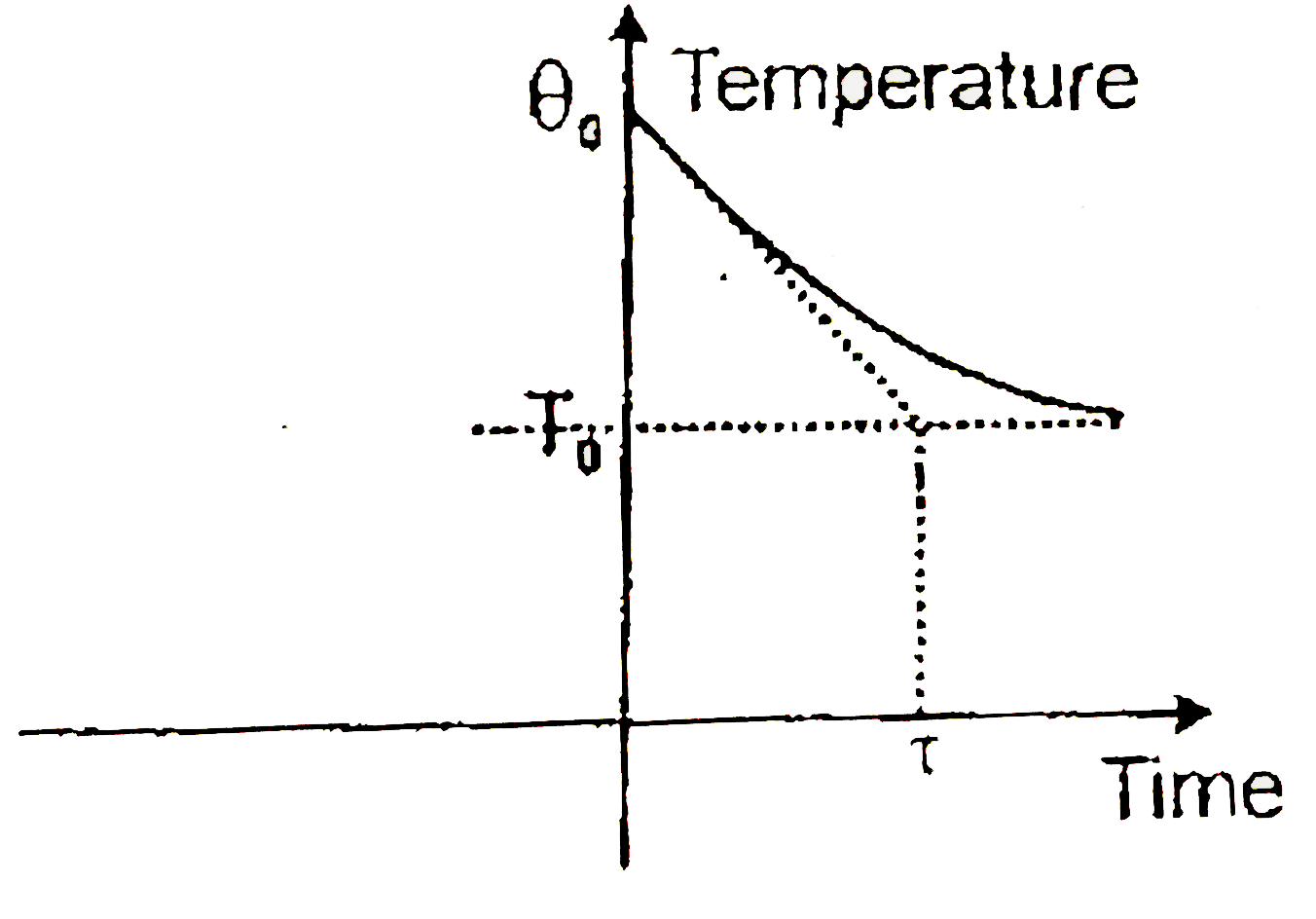A hot body placed in a surrounding of temperature θ0 obeys Newton's law of cooling dθdt=−k(θ−θ0) . Its temperature at t=0 is θ1 the specific heat capacity of the body is s and its mass is m. Find
(a) the maximum heat that the body can lose and
(b) the time starting from t=0 in which it will lose 90% of this maximum heat.Solution in Tamil
The correct Answer is:A, B
Given :
Heat capacity =m×s=8−J^∘C
(dthηdt)∈creases=2∘Cs
(dthηdt)decreases=0.2∘Cs
(a) Powerofheater=mS(dthηdt)∈creases
=80×2=160W
(b) Power of radiated
=mS(dthηdt)+(decreases)
=80×0.2=16W.
(c) Now, m(dthη(dt)decreases=K(T−T0
⇒16=K(30−20)
⇒K+1610=1.6
Now (dthηdt)=K(T−T0)=1.6×(30−25)
=1.6×5=8W.
Topper's Solved these Questions
Similar Questions
A centigrade and a Fahrenheit thermometer are dipped in boiling water. The water temperature is lowered until the Fahrenheit thermometer registered at 140°F. What is the fall in temperature as registered by the centigrade thermometer ?
View SolutionThe steam point and the ice point of a mercury thermometer are marked as 80∘C and 20∘C. What will be the temperature in centigrade mercury scale when this thermometer reads 32∘C?
View SolutionFind the dimensions of
a. linear momentum
b. frequency and
c. pressure
View SolutionA hot fbody placed in air is cooled down according to Newton's law of cooling, the rate of decrease of temperature being k times the temperature difference from the surrounding. Starting from t=0 , find the time in which the body will loss half the maximum heat it can lose.
View SolutionA body with an initial temperature θ1 is allowed to cool in a surrounding which is at a constant temperature of θ0(θ<θ1) Assume that Newton's law of cooling is obeyed Let k= constant The temperature of the body after time t is best experssed by .
View SolutionIn Newton's law of cooling dθdt=−k(θ−θ0) the constant k is proportional to .
View SolutionA hot body placed in air is cooled down according to newton's law of cooling the rate of decrease of temperature being k times the temperature difference from the surrounnding Starting from t=0 The time in which the body will lose half of the maximum heat is xLn22k Find the value of x .
View SolutionA body at temperature θ0 having Newton's cooling constant K is placed in a surrounding having temperature T0 at time t = 0. The graph of temperature of the body as a function of time t is shown in the adjacent figure. A tangent on the curve is drawn at t = 0 as shown in the figure. Find the value of τ.

View SolutionIf the temperature of the body theta and time of cooling 't' and room temperature of the surrounding theta_(0) . The cooling curve is
View SolutionNewton's law of cooling applies when a body is losing heat to its surroundings by
View SolutionA liquid in a beaker has temperature ϕ(t) at time t and θ0 is temperature of surroundings, then according to Newton's law of cooling the correct graph between loge(θ−θ0) and t is
View SolutionIf a piece of metal is heated to temperature θ and then allowed to cool in a room which is at temperature θ0 the graph between the temperature T of the metal and time t will be closest to :
View Solutionएक बीकर में एक द्रव का तापमान समय t पर θ(t) है और वातावरण का तापमान θ0 है, तब न्यूटन के शीतलन नियम के अनुसार loge(θ−θ0) और t के बीच निम्न में से कौन सा ग्राफ सही है
View SolutionA hot body placed in air is cooled down according to Newton's law of cooling, the rate of decrease of temperature being k times the temperature difference from the surrounding. Starting from t=0 , find the time in which the body will loss half the maximum heat it can lose.
View SolutionA body with an initial temperature θ, is allowed to cool in a surrounding which is at a constant temperature of θ0(θ0<θi). Assume that Newton.s law of cooling is obeyed. Let k = constant. The temperature of the body after time t is best expressed by
View SolutionA hot body placed in air is cooled down according to Newton's law of cooling, the rate of decrease of temperature being k times the temperature difference from the surrounding. Starting from t=0 , find the time in which the body will lose half the maximum heat it can lose.
View Solution
